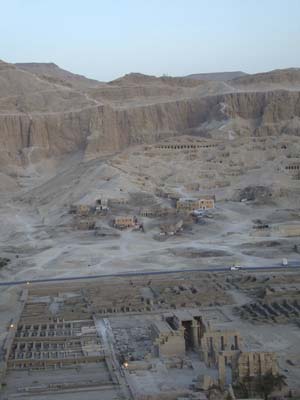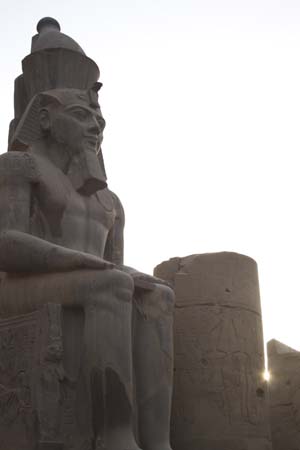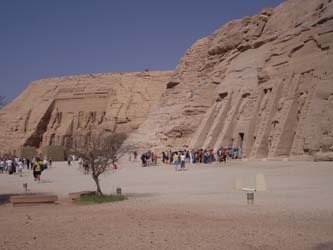Ramses II Biography: Architectural Accomplishments
 © Richard White – Ramesseum from the air
© Richard White – Ramesseum from the air
Perhaps the best-known achievements of Ramses the Great are his architectural endeavors, most notable the Ramesseum and the temples of Abu Simbel. Ramses II’s interest in architecture resulted in the erection of more monuments than any of the other ancient Egyptian pharaohs. A significant number of architectural tributes attributed to Ramses II still dominate the landscape of Egypt today.
The Ramesseum is a memorial temple complex situated close to Luxor (even closer to Qurna). Although it is in ruins now, it is still recognizable for the large Pylon of Ramesses inside which is useful as a historical document.

© Santiago Samaniego – Ramses at Luxor
Pylon is the Greek word for the entrance of an Egyptian temple. The pylon is inscribed with images showing Ramesses victories over the Hittites in war, and the subsequent peace treaty which ensued. This pylon, along with other inscriptions and temples created during Ramses II’s reign, shows that this pharaoh wanted to be remembered for his influence on military, political, and religious life.
Also at the Ramesseum are the remains of a gigantic Ramses II statue. It used to be 56ft (17m) high, but now only parts of the torso and base remain. Other remains found are those of 2 large statues of a seated Ramesses 2 (the bust is on display in the British Museum).
The Abu Simbel temples, 2 massive twin rock temples, were also built by Ramses II. They are situated in Nubia (South Egypt), close to Lake Nasser, and were meant to commemorate his reign, and that of his queen, Nefertari.
Discover more about Abu Simbel


















































